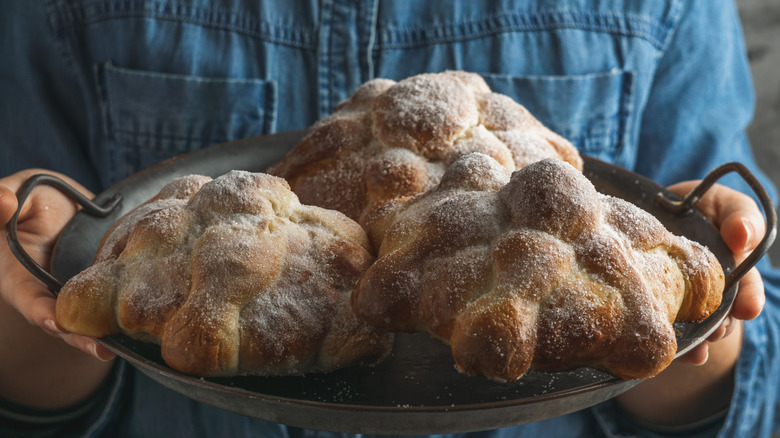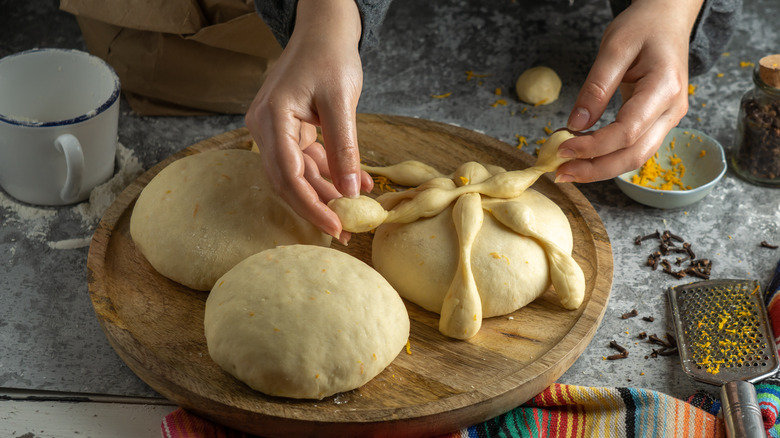The Symbolism Behind Pan De Muertos, The Iconic Day Of The Dead Treat
What comes to mind when you think of Day of the Dead? The traditional bright colors, sugar skulls and other cultural motifs, or perhaps bread? The holiday — known as Día de los Muertos — is observed in Mexican culture from October 31 to November 2. People gather on these special days to honor the spirits of their loved ones, and it is recognized in several different ways, with cities worldwide putting on parades, festivals, and public displays. Another way the occasion is recognized is with a unique bread called pan de muertos, which is considered a staple during the celebrations.
The traditional bun is sweetened with orange, cinnamon, and sugar. There are variations in how it is prepared with orange juice, orange blossom water, orange zest, rose water, and anise being popular ingredients. The bread is often paired with a Mexican hot chocolate beverage that is spiced with cinnamon and chili powder.
Pan de muertos represents both life and death which is prevalent in its design. The base of the bread is typically shaped like a dome before being topped with long pieces of dough to emulate a cross and a round ball in the center. The ball is said to represent one's skull while each side of the cross represents an Aztec god — Quetzalcóatl, Xipe Tótec, Tláloc, and Tezcatlipoca — given that the origins of the holiday can be traced to the Aztec people, who lived in what is now considered central Mexico.
How are pan de muertos decorated?
Pan de muertos serve a variety of purposes during the holiday. It is considered both a treat for the living and the dead as it can be placed on the ceremonial altar as an offering for the souls who are said to be visiting the living world over the special days. When placed on the altar, the treat is typically surrounded by other traditional Mexican foods or the favorite foods of the loved ones being honored. However, when enjoyed by the living, the bread can be customized to one's liking.
The bread can be decorated in many different ways depending on regionality and personal preference. The sweet bread typically has granulated sugar sprinkled on top of the symbolic design which adds a delightful crunch. It also can be covered in sesame seeds instead of sugar, if desired. Other variations of the bread include it being filled with sweet cream or chocolate custards. The sugar used to decorate the bread can be dyed in the traditional colors of the holiday, including pink, yellow, orange, purple, blue, white, red, green, and black.
Another variation of the ceremonial bread is called pan de yema which is typically found in the Mexican city of Oaxaca. This bread is buttery rather than sweet and is made with several egg yolks. This bun is shaped into circles and then decorated with edible molds that are painted with faces.

